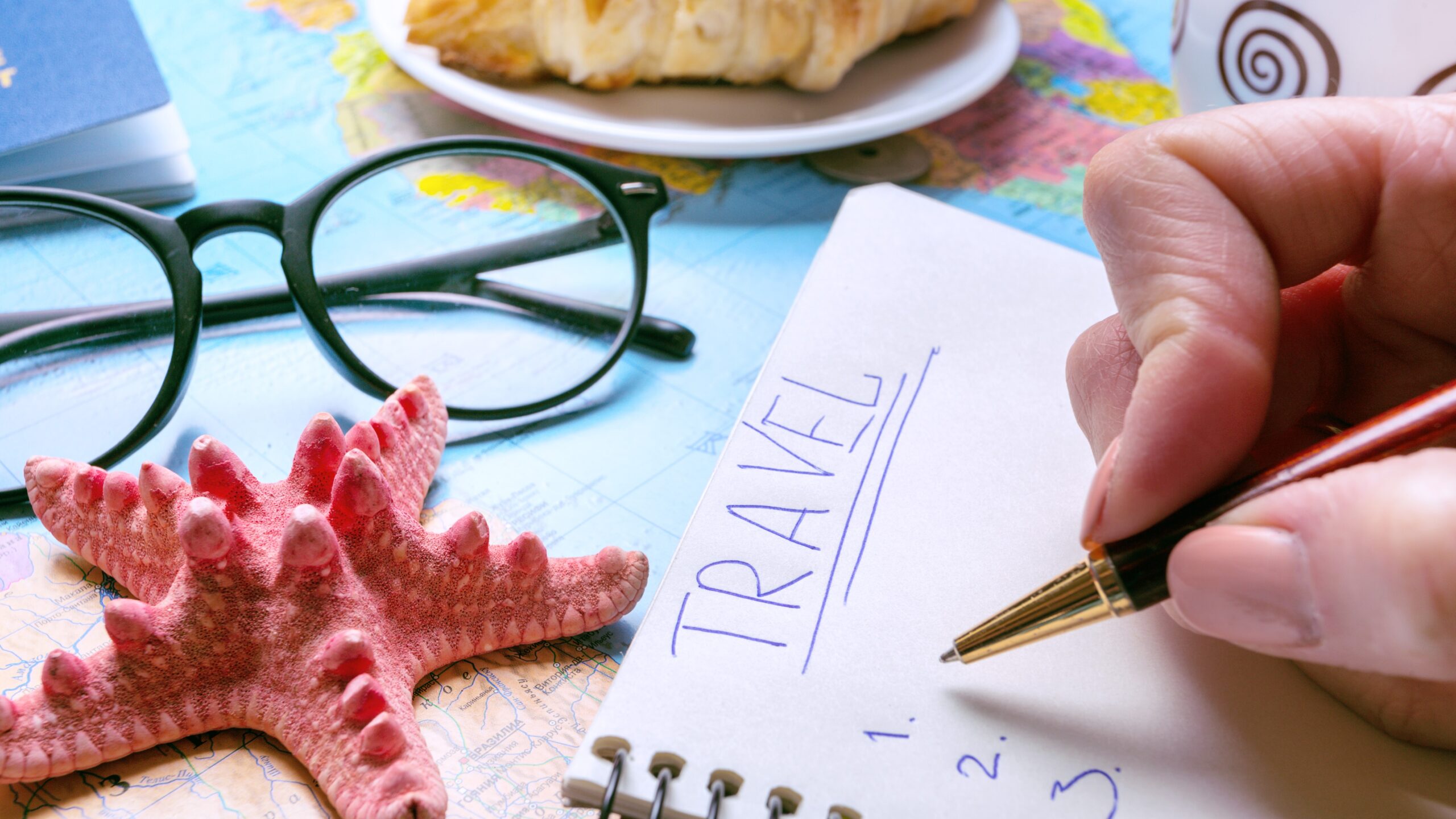Traveling doesn’t always mean taking two weeks off work and hopping on a long-haul flight. Sometimes, you only have a weekend, a day, or even a few hours. Sounds impossible?
Why Traveling on a Tight Schedule is Totally Doable
Life moves fast — work, school, family, deadlines. It can feel like there’s never a good time to take a break, let alone travel. But here’s the truth: you don’t need weeks off or a wide-open calendar to enjoy an adventure. In fact, short, well-planned trips can be some of the most rewarding experiences. When your time is limited, you naturally become more intentional with your choices, focusing only on the things that matter most. That means less wandering aimlessly and more meaningful memories packed into every moment.
Short trips push you to be efficient and creative. You stop overthinking and start doing. Even if you only have one or two days, with the right strategy and mindset, you can still explore a new city, try local food, meet people, and return with stories worth sharing. Instead of letting a tight schedule stop you, let it sharpen your focus and fuel your sense of adventure. Traveling on a tight schedule isn’t just doable — it might even be better.
Who This Guide is For
This guide is made for anyone who wants to travel but doesn’t have the luxury of unlimited time. Are you a 9-to-5 worker squeezing in a quick weekend getaway? A student trying to make the most of a short break? Or maybe you’re a busy parent, entrepreneur, or freelancer who’s constantly juggling responsibilities? If you love the idea of travel but always feel short on time — this guide is for you.
It’s also perfect for:
- Business travelers wanting to explore between meetings
- Digital nomads balancing work and adventure
- People making the most of a long layover
- Weekend warriors who love quick escapes
- First-time travelers intimidated by long, complex trips
No matter your lifestyle, your time limitations shouldn’t hold you back. This guide gives you the tools to travel smarter, not longer.
Planning is Your Superpower
Set Clear Goals for Your Trip
The first step in maximizing a short trip is knowing exactly what you want out of it. Ask yourself: Why am I going? Is it to relax? Explore history? Eat amazing food? Without a clear purpose, it’s easy to get overwhelmed by all the options. When your time is limited, focus becomes your best friend. Knowing your “why” helps you cut out the noise and choose the experiences that will actually fulfill you.
Here’s how to define your travel goals:
- Decide the main theme of your trip: adventure, food, culture, nature, or relaxation.
- Make a quick list of experiences or feelings you want from the trip.
- Keep your purpose in mind when planning your itinerary — it helps you avoid distractions and FOMO.
Prioritize Must-See Spots
You can’t see an entire city in 24 or even 48 hours — and that’s okay. The key is to prioritize. Focus on the few things that will make you feel like you truly experienced the place. Think quality over quantity. Make a short list of absolute must-dos, and treat anything beyond that as a bonus.
Try the “Top 3 Rule”:
- Choose 3 non-negotiable experiences (landmarks, restaurants, neighborhoods).
- Keep a list of 1–2 “nice-to-have” options in case you have extra time.
- Don’t stress if you don’t tick off everything — your top 3 is your real success metric.
This approach keeps you focused and allows you to actually enjoy your trip instead of rushing through a checklist.
Research Like a Travel Detective
Doing your homework pays off big time when you’re short on hours. Knowing what’s open, where things are located, and how long they take to explore can make or break your schedule. You don’t need to plan every second, but you do want to avoid wasting time on closed attractions, long lines, or long commutes between stops.
Here’s how to research smart:
- Check opening and closing times of museums, attractions, and local businesses.
- Look up national holidays or special events that might affect availability.
- Use Google Maps to estimate walking/driving times between stops.
- Read recent reviews for tips on peak times and hidden shortcuts.
- Save offline versions of maps and key info in case you lose connection.
A little prep work upfront helps you travel confidently and avoid nasty surprises.
Book Everything in Advance
When time is tight, spontaneity can sometimes be the enemy. Booking things in advance — especially high-demand activities — helps you skip lines, save money, and avoid disappointment. Plus, it frees up mental space so you can just enjoy the trip instead of worrying about logistics.
Here’s what to book ahead:
- Flights and trains (including return!)
- Accommodation near your main activities
- Tickets for attractions or tours that often sell out
- Restaurant reservations, especially for popular spots
- Airport transfers or local transport passes
Bonus tip: Save all your bookings in one travel app like TripIt or Google Travel so everything’s in one place and easy to access on the go.
Smart Packing Saves You Time
Go Light, Move Fast
When you’re on a tight schedule, every second matters — and that includes the time you waste at the airport. One of the smartest moves you can make is traveling with carry-on only. No checked bags, no waiting at the baggage carousel, and no risk of lost luggage. You get off the plane, and you’re instantly on your way. It’s faster, cheaper, and gives you way more flexibility, especially if you’re taking multiple flights or switching transport frequently.
Traveling light doesn’t mean you have to compromise on comfort. It just means being strategic about what you bring. You’ll be surprised how little you actually need for a 2–3 day trip. Focus on multi-purpose items, keep things compact, and stick to the essentials. Trust us — once you experience the freedom of carry-on-only travel, you’ll never go back.
Must-Have Items for Quick Travel
Let’s break it down. The key to efficient packing is knowing what really matters. Here’s a simple, practical guide to must-pack items, divided into categories that save you time, space, and stress:
| Category | Item | Why You Need It | Pro Tip |
| Tech Essentials | Power bank | Keeps your phone charged all day — no outlet needed | Choose one with at least 10,000mAh |
| Universal adapter | One plug for any country — no surprises when you arrive | Get one with USB ports included | |
| Downloaded apps | Use maps, translation, and bookings even offline | More on this in the next section | |
| Clothing Hacks | Neutral color clothes | Easy to mix and match without thinking | Black, white, beige, or grey work great |
| One versatile pair of shoes | Wear them on the plane, use them everywhere | Pick comfy sneakers or loafers | |
| Rolled clothing | Saves tons of space, reduces wrinkles | Roll tightly and fill gaps in your bag |
By following these tips, you’ll streamline your entire travel experience — from packing to navigating the airport to walking through new cities. You’ll feel lighter (literally) and move through your schedule like a pro.
Use Technology to Your Advantage
Travel Apps That Are Game-Changers
You’re basically carrying a travel assistant in your pocket — your smartphone. When you’ve only got a couple of days to explore, using the right apps can seriously supercharge your experience. From finding your way to booking last-minute tickets, the right tools can save you hours and reduce stress. You won’t need to ask for directions, search for public transport options, or even print your itinerary. Everything’s handled.
Here are a few essential apps that will change how you travel:
- Google Maps – Download offline areas of your destination so you can navigate even without data.
- Rome2Rio – Instantly see how to get from point A to point B using buses, trains, taxis, and more.
- TripIt – Keep all your bookings in one place: flights, hotels, rental cars, and even restaurant reservations.
- Google Translate – Break down language barriers with instant text, voice, or photo translation.
Installing and setting up these apps before your trip means you can focus on exploring, not troubleshooting.
Offline Maps & Language Tools
Worried about poor Wi-Fi or no mobile data? Don’t be. You can turn your phone into a fully functioning guidebook without ever connecting to the internet. Offline maps let you find your way through new cities, even in airplane mode. Just download the map of your destination on Google Maps beforehand and you’re good to go.
The same goes for language tools. Download common phrases or full language packs in translation apps so you can ask for directions, order food, or check into a hotel with confidence. No signal? No problem. These tools make sure you’re never really lost — and even if you are, you’ll know how to ask for help.





